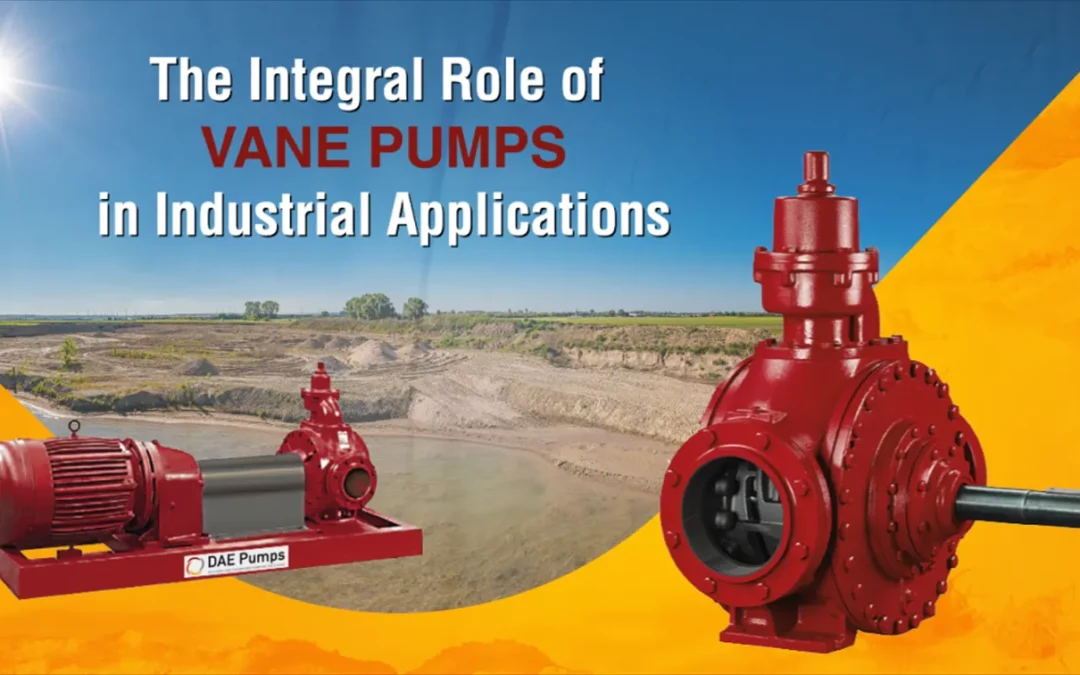Vane pumps, a type of positive displacement pump, are essential in hydraulic systems due to their proficiency in handling low-viscosity fluids at relatively high pressures. Characterized by their unique design, these pumps consist of a series of vanes mounted to a rotor that rotates inside a cavity. As the rotor spins, the vanes extend and retract due to centrifugal force and the interaction with the pump casing, creating volumetric chambers that draw in and expel fluid. This design allows vane pumps to maintain steady fluid flow rates and provide quiet operation, making them suitable for various applications, from automotive power steering systems to industrial fluid transfers and fuel loading.
DAE Pumps specializes in advanced fluid management solutions, and integrating vane pump technology could enhance its offerings, particularly in applications requiring efficient, reliable handling of low-viscosity fluids. Including vane pumps expands its capability to cater to diverse industrial needs, underscoring its commitment to versatile and robust pumping solutions.
Defining a Vane Pump
A rotary vane pump is a positive displacement pump used explicitly to transfer low-viscosity fluids at medium to high pressures. Its circular rotor rotating inside a larger circular cavity or casing distinguishes this pump. The rotor is typically positioned eccentrically within the casing, creating variable chamber sizes as it rotates, a key characteristic of rotary vane vacuum pumps.
Fundamental Mechanics of a Rotary Vane Pump
Rotor and Vanes: The rotor contains slots that house the vanes, which can slide in and out. These vanes are usually extended by centrifugal force or a spring mechanism. As the rotor spins, the vanes maintain contact with the walls of the casing, forming effective seals.
Chamber Creation: During operation, the space (or chamber) between two vanes expands on the inlet side, pulling in fluid due to the vacuum created. This chamber then carries the fluid around the pump casing to the outlet side.
Compression and Discharge: The chamber between the vanes shrinks on the outlet side, compressing the fluid and expelling it through the discharge port. This continuous rotary action enables a steady, pulsation-free flow.
Adjustable Volume: Some advanced models of vacuum rotary vane pumps allow for adjusting the rotor’s position inside the casing, facilitating control over the output flow rate and pressure, which is crucial for specific applications.
Importance in Industrial Applications
Rotary vane pumps, including rotary vane vacuum pumps, are essential in various industrial applications due to their efficiency and versatility in managing thin liquids at higher pressures. Here are some critical areas of use:
- Automotive Industry: It is employed in systems such as automatic transmissions, power steering, and fuel injections, where precision fluid control is essential.
- Fuel Handling Systems: These pumps are ideal for efficiently and safely pumping low-viscosity fluids like petrol, diesel, and kerosene.
- Air Conditioning Systems: Rotary vane vacuum pumps handle refrigerants in HVAC systems, ensuring system reliability.
- Manufacturing and Processing Industries: These are utilized for the precise dosing and consistent flow of solvents, liquefied gases, and other chemicals.
- Hydraulic Systems: Crucial in mobile and industrial hydraulic units, these pumps provide the necessary power for various machinery and equipment.
Rotary vane pumps’ design features, such as their ability to maintain a consistent flow regardless of pressure changes and minimal pulsation, make them particularly suitable for applications where smooth, continuous flow and long-term reliability are critical. Their operational efficiency and adaptability to handle various fluids significantly enhance productivity and minimize downtime in industrial settings.
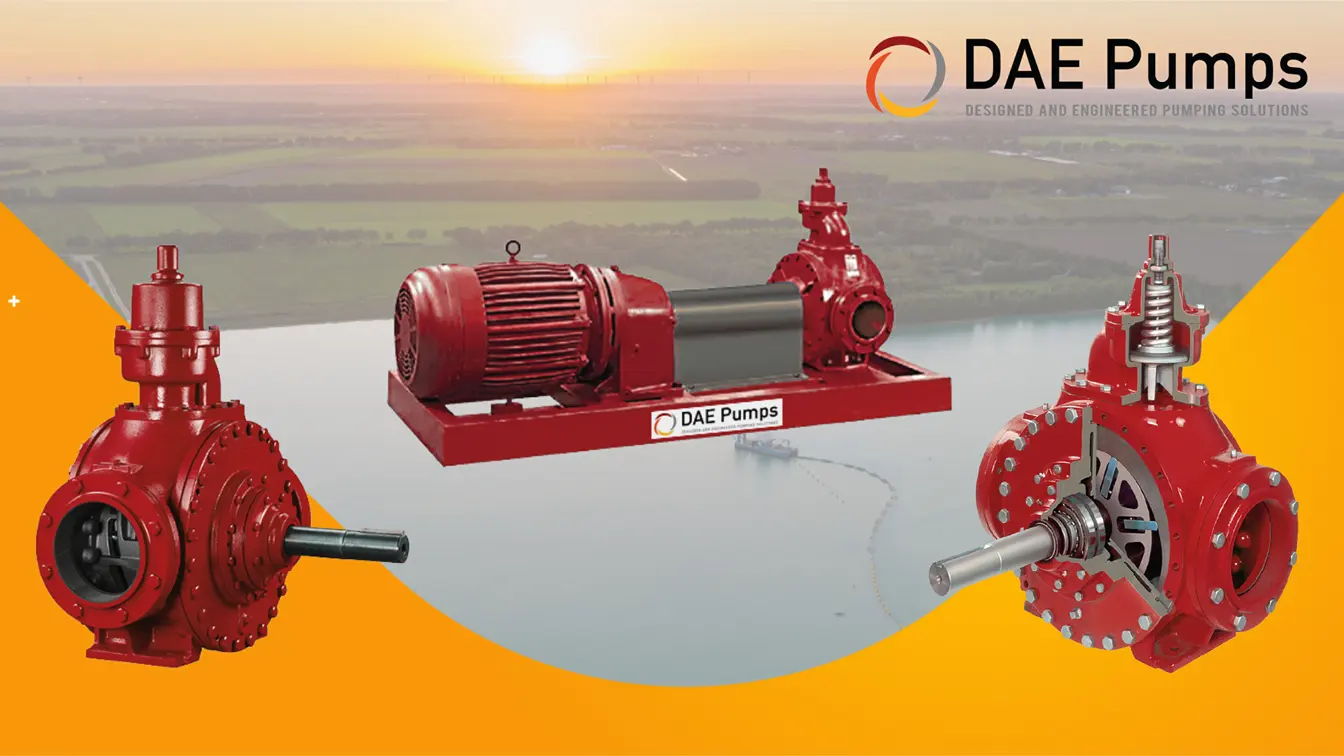
Selecting the Right Vane Pump
Types of Vane Pumps
Vane pumps are classified into different types based on their design and specific applications, with rotary vane pumps being one of the most prominent types. These pumps are distinguished by their capability to maintain a consistent flow rate and operate at high efficiencies, making them ideal for various industrial and automotive applications. Here are some of the types of vane pumps:
-
Fixed Displacement Vane Pumps
These pumps have a fixed flow rate and are typically used in circuits requiring constant flow. They are more straightforward in design and are often used in moderate-pressure applications.
-
Variable Displacement Vane Pumps
These are more complex and allow the flow rate and output pressure to be adjusted according to system requirements. They are used in applications that require variable flow and pressure.
-
Balanced Vane Pumps
These pumps’ balanced design reduces the load on the pump bearings, helping to extend the pump’s life even under high-pressure conditions.
Among these types, rotary vane pumps, especially rotary vane vacuum pumps, are noted for their efficiency and versatility.
Design and Operation Principles of Rotary Vane Pumps:
Design
The rotary vane pump consists of a rotor mounted eccentrically within a cylindrical housing. Vanes, usually made of metal or durable composite material, are free to slide in and out of slots in the rotor. As the rotor turns, centrifugal force extends the vanes from the slots, maintaining contact with the housing walls. The eccentricity between the rotor and the housing creates a crescent-shaped cavity that diminishes in volume as the rotor turns.
Operation Principles
The following steps characterize the operation of a rotary vane pump:
- Intake Phase: As the rotor rotates, the volume on the pump’s intake side expands. This expansion creates a vacuum that allows the pump to draw in the fluid.
- Compression Phase: The vanes trap the fluid as it passes the inlet port and is carried around the casing until it reaches the discharge side.
- Discharge Phase: As the vanes pass the outlet port, the space between them and the casing decreases, increasing the pressure and forcing the fluid out of the pump.
Importance of Rotary Vane Pumps
Rotary vane pumps, including specialized vacuum rotary vane pumps, are critical in systems requiring precise fluid movement control. They are extensively used in HVAC systems for their efficiency in handling refrigerants, automotive applications for power steering and brake systems, and industrial settings for the controlled transfer of gases and liquids. Their ability to provide a continuous flow with minimal pulsations makes them particularly valuable in settings where consistency and reliability are paramount.
Overall, rotary vane pumps’ adaptability and mechanical efficiency make them a preferred choice in general and specialized applications, contributing significantly to system efficiency and operational reliability.
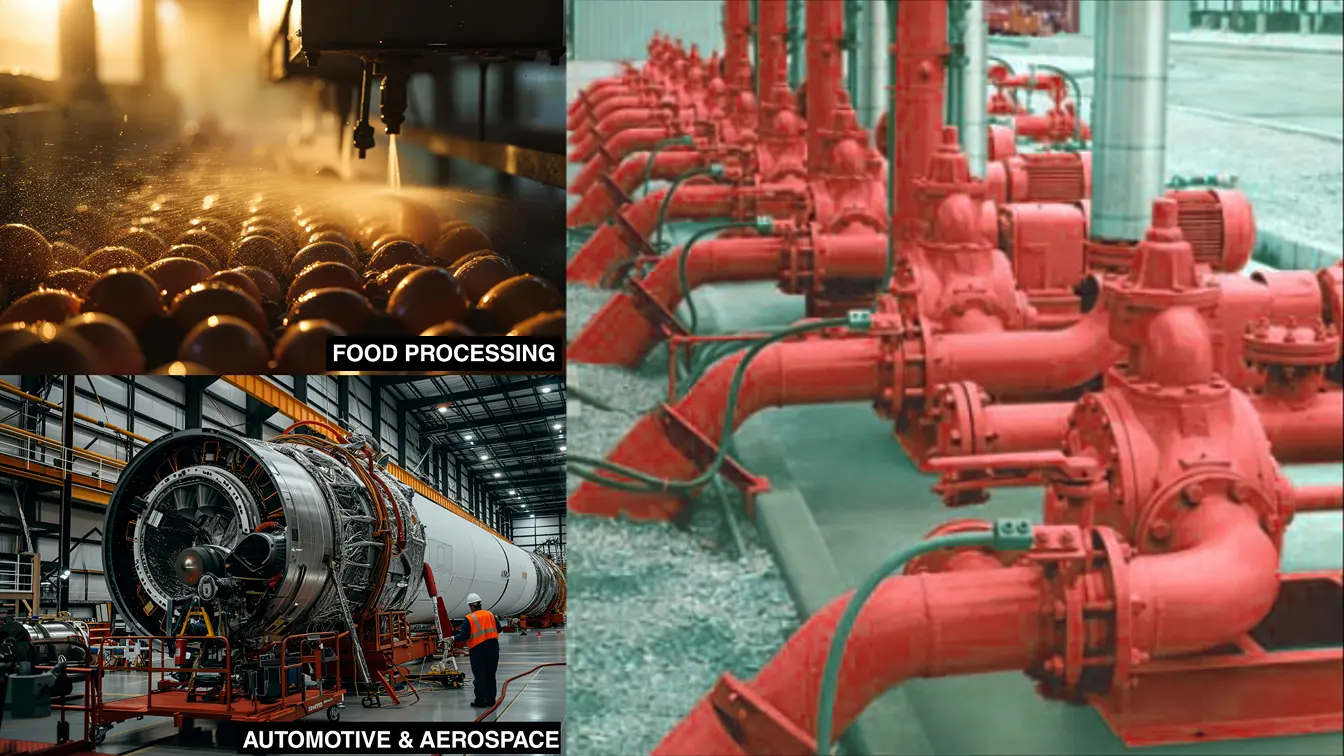
Applications and Advantages of Vacuum Rotary Vane Pumps
Rotary Vane Vacuum Pumps
Detailed analysis of rotary vane vacuum pumps
Rotary vane vacuum pumps are a specialized form of rotary vane pumps specifically designed to create a vacuum in an enclosed system. These pumps are distinguished by their ability to achieve high vacuum levels, which makes them ideal for applications requiring the removal of air or other gases from a sealed environment.
Difference Between Rotary Vane Vacuum Pumps and Other Vane Pumps
While the basic operational principles of rotary vane vacuum pumps are similar to other vane pumps, there are key differences that make them suited for vacuum applications:
- High Vacuum Levels: Rotary vane vacuum pumps can achieve much lower pressures than general rotary vane pumps. This is due to their design, which ensures a complete and continuous seal between the vanes and the pump chamber, minimizing air leakage and creating a deep vacuum.
- Oil Sealing: Most rotary vane vacuum pumps use oil in the pumping mechanism to improve the seal and lubricate the moving parts. This oil helps to maintain the vacuum by sealing the minute gaps between the vanes, rotor, and casing. Also, it absorbs the heat of operation, which can be significant at lower pressures.
- Material and Build Quality: Vacuum pumps often feature more robust materials and construction to withstand the stresses associated with deep vacuum operation, including corrosion resistance to handle aggressive gases.
Applications of Rotary Vane Vacuum Pumps
Rotary vane vacuum pumps are utilized in a variety of industries and applications due to their efficient and reliable vacuum creation:
- Medical and Laboratory Applications: It is used in processes such as freeze-drying, vacuum concentration, and the operation of various analytical instruments where precise vacuum control is necessary.
- Food Processing: Employed in vacuum packaging and processing to extend the shelf life of food products by removing air from the packaging environment.
- Electronics Manufacturing: Critical in producing semiconductors and electronic components used for vacuum deposition and evacuating process chambers.
- Automotive and Aerospace: It is used for vacuum metalizing, plastics forming, and other processes that require a controlled vacuum environment.
Advantages of Rotary Vane Vacuum Pumps
The use of rotary vane vacuum pumps offers several advantages in industrial applications:
- Consistent Performance: They provide consistent vacuum levels and flow rates, essential for processes requiring stable operating conditions.
- Durability: Designed for longevity, these pumps can handle continuous operation thanks to robust construction and adequate lubrication.
- Versatility: They can handle a range of substances, from gases to small amounts of liquids, making them suitable for diverse industrial applications.
- Low Operational Noise: Vacuum pumps are typically quieter than other types, which is beneficial in environments where noise reduction is essential.
Vacuum Rotary Vane Pumps: A Deeper Dive
Vacuum rotary vane pumps are essential for creating and maintaining a vacuum in various industrial and scientific settings. These pumps operate on a simple but effective principle involving a rotating chamber assembly that allows air and gases to be progressively compressed and evacuated.
Unique Features of Vacuum Rotary Vane Pumps
- Mechanical Simplicity: They have a straightforward design consisting of a rotor, vanes that slide in and out, a cavity, and an inlet and outlet. This simplicity aids in ease of maintenance and repair.
- Oil-Sealed: Many vacuum rotary vane pumps are oil-sealed, which helps to create a better seal and lubricate the vanes and chamber, reducing wear and extending the pump’s lifespan. The oil also traps contaminants and can act as a coolant, absorbing heat generated during operation.
- Consistent Vacuum Level: These pumps can maintain a consistent vacuum over long periods, which is essential for processes requiring stable vacuum conditions.
- Modularity and Scalability: Due to their straightforward design, they can be easily scaled up or adapted with multiple stages to achieve lower pressures suitable for more demanding applications.
Comparison with Other Vacuum Pump Technologies
To appreciate the niche that vacuum rotary vane pumps fill, it’s helpful to compare them with other types of vacuum pumps:
- Diaphragm Pumps:
- Turbomolecular Pumps:
- Scroll Pumps:
- Roots Blower Pumps:
These are oil-free, which eliminates contamination risks. However, diaphragm pumps generally do not achieve as low a pressure as oil-sealed rotary vane pumps and are more suitable for applications where a moderate vacuum is acceptable.
These are used when a shallow pressure (high vacuum) is required, such as in scientific research or semiconductor manufacturing. While highly effective, turbomolecular pumps are significantly more complex and expensive than rotary vane pumps and require a backing pump to remove most of the air initially.
Oil-free scroll pumps offer cleaner operations and suit applications sensitive to contamination. They can’t achieve as low a vacuum as rotary vane pumps and are more expensive, but they are preferred in laboratory environments due to their quiet operation and lower maintenance.
These are used for much higher flow rates but lower vacuum levels. They are often combined with other pump technologies to boost flow rates without achieving deep vacuum levels.
Applications and Advantages of Vacuum Rotary Vane Pumps
Vacuum rotary vane pumps are particularly valued in environments where a reliable medium to high vacuum is needed along with robust performance. They are commonly found in applications such as vacuum packing, refrigeration maintenance, medical processes requiring suction, and automotive and aerospace testing and manufacturing.
The principal advantage of vacuum rotary vane pumps lies in their reliability, simplicity, and cost-effectiveness for the vacuum levels they can achieve. Thanks to the oil-seal mechanism, they can handle wet or humid gas streams, further broadening their applicability across various industrial processes and making them a versatile and practical choice in vacuum technology.
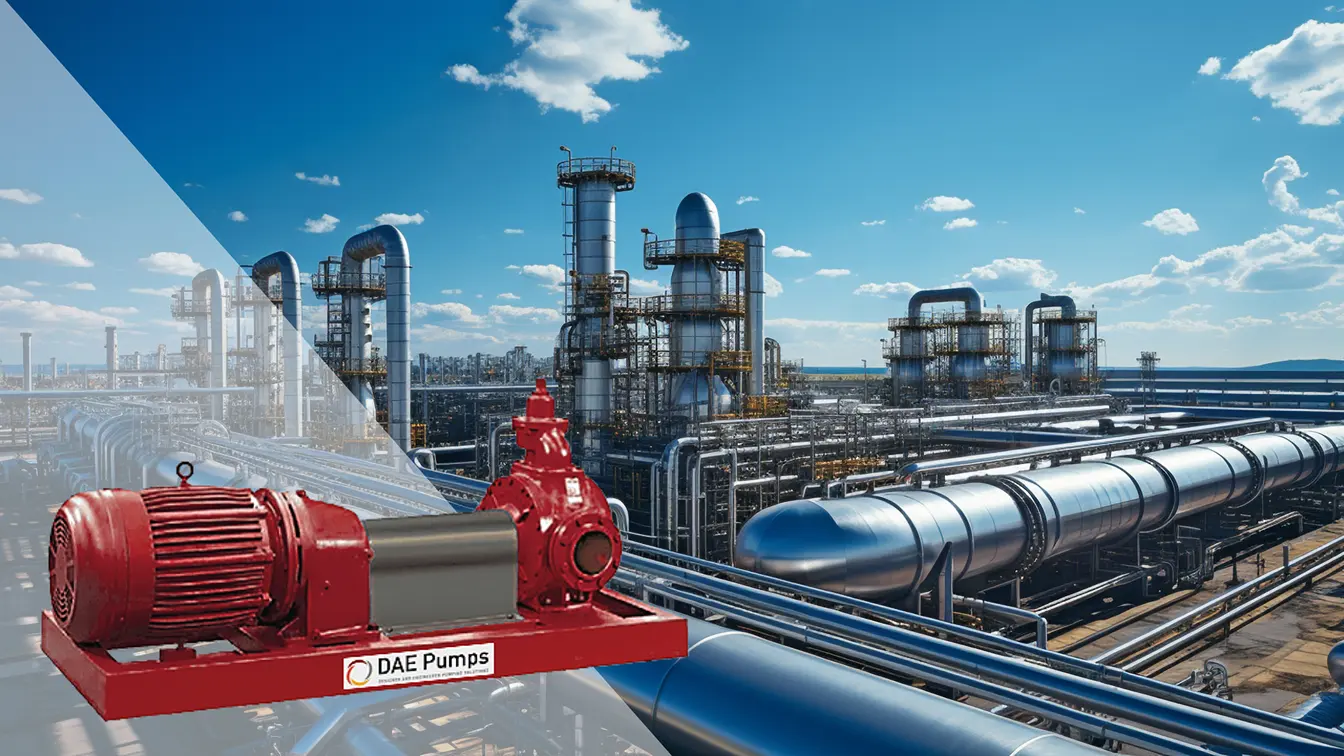
Real-World Applications of DAE Pumps – Vane Pumps
Industrial Applications for Vane Pumps
Vane pumps, mainly rotary vane pumps, are crucial in various industrial applications due to their ability to efficiently handle medium to low-viscosity fluids at varying pressure levels. Here are some key industries where these pumps play a vital role:
-
Automotive Manufacturing
In automotive production, rotary vane pumps are used for power steering, automatic transmission fluids, and brake system applications where consistent pressure and flow are necessary for operational accuracy and safety.
-
Food and Beverage Processing
Vane pumps are employed in the food processing industry to transfer products such as oils, syrups, and concentrates. The gentle handling of the pump minimizes shear and maintains the integrity of delicate products.
-
Pharmaceuticals
In the pharmaceutical industry, precision and contamination-free handling are crucial. Rotary vane vacuum pumps are used to coat tablets, apply vacuum during the filling of vials, and produce creams where air-free conditions are required.
-
Chemical Industry
These pumps transfer solvents, acids, and other chemicals, benefiting from the vane pump’s ability to handle corrosive materials if designed with appropriate materials.
-
Environmental Management
Rotary vane vacuum pumps are used in environmental applications, such as soil remediation and groundwater sampling, where creating a vacuum is necessary to extract samples or contaminants.
Case Studies: Real-World Applications of DAE Pumps’ Vane Pumps
Food Processing Plant
- Problem: A large food processing plant faced experiencing efficiency issues with its old pumping systems, which were used to transfer various syrups and oils.
- Solution: DAE Pumps provided rotary vane pumps tailored explicitly for food applications, ensuring gentle handling and efficient transfer of viscous products.
- Result: The plant reported improved production speed and reduced maintenance downtime, attributed to the new pumps’ consistent performance and reliability.
Pharmaceutical Facility
- Problem: A pharmaceutical company needed a reliable solution for maintaining a contaminant-free environment in their vacuum drying processes.
- Solution: DAE Pumps supplied high-performance rotary vane vacuum pumps that maintained the precise conditions required for adequate drying and processing of pharmaceutical products.
- Result: The installation of DAE’s vacuum pumps increased process reliability and decreased product batch failures, enhancing overall productivity.
Automotive Parts Manufacturer
- Problem: An automotive parts manufacturer was experiencing inconsistent pressure and flow rates in their fluid handling systems, affecting product quality.
- Solution: DAE Pumps provides specialized rotary vane pumps designed to handle the specific requirements of automotive fluid applications.
- Result: The improved system allowed for more consistent manufacturing conditions, resulting in higher product quality and customer satisfaction.
Selecting the Right Vane Pump
Selecting the right vane pump, especially a rotary vane pump or rotary vane vacuum pump, for specific industrial needs involves thoroughly understanding your application’s requirements and the various characteristics of the pump models available. Here are vital factors to consider to ensure you choose the most suitable pump for your operations:
Operating Conditions
- Fluid Characteristics: Consider the type of fluid the pump will handle. Factors like viscosity, corrosiveness, and presence of solids can significantly affect pump choice. For example, rotary vane pumps are excellent for low-viscosity fluids.
- Vacuum Requirements: If your application requires a vacuum, such as in packaging or medical applications, choosing a vacuum rotary vane pump to achieve the necessary vacuum levels is critical.
Flow Rate and Pressure
- Flow Rate Requirements: Determine the required flow rate for your process. Vane pumps are available in various sizes that deliver different flow rates, so matching the pump capacity with your flow needs is essential.
- Discharge Pressure: The required discharge pressure is another critical factor. Ensure the rotary vane pump can provide the pressure needed for your system without overloading the pump’s capabilities.
Material Compatibility
- Pump Materials: Check the materials used in the pump construction. The materials should be compatible with the processed fluids to avoid corrosion or degradation. For instance, if handling aggressive chemicals, look for pumps made with corrosion-resistant materials.
Efficiency and Maintenance
- Energy Efficiency: Consider the pump’s energy consumption. More efficient pumps can reduce operating costs significantly over time.
- Maintenance Requirements: Understand the pump’s maintenance needs. Rotary vane pumps, especially those with oil-lubricated systems, require regular maintenance to ensure optimal performance and longevity.
Manufacturer Reputation and Support
- Quality and Reliability: Choose a pump from a manufacturer with a proven quality and reliability track record. Research their market reputation and read customer reviews.
- After-Sales Support: Good after-sales support is crucial for addressing any operational hitches. Check if the manufacturer offers prompt technical support, availability of spare parts, and service options.
Cost Considerations
- Initial Cost vs. Operational Cost: While the initial cost is a significant factor, consider the operational costs, including energy consumption, maintenance, and potential downtime. A cheaper pump that requires frequent repairs and maintenance may be more costly in the long run.
Regulatory and Safety Standards
- Compliance: Ensure the rotary vane vacuum pump complies with industry and safety standards relevant to your region and industry. Compliance not only ensures safety but also enhances process efficiency and product quality.
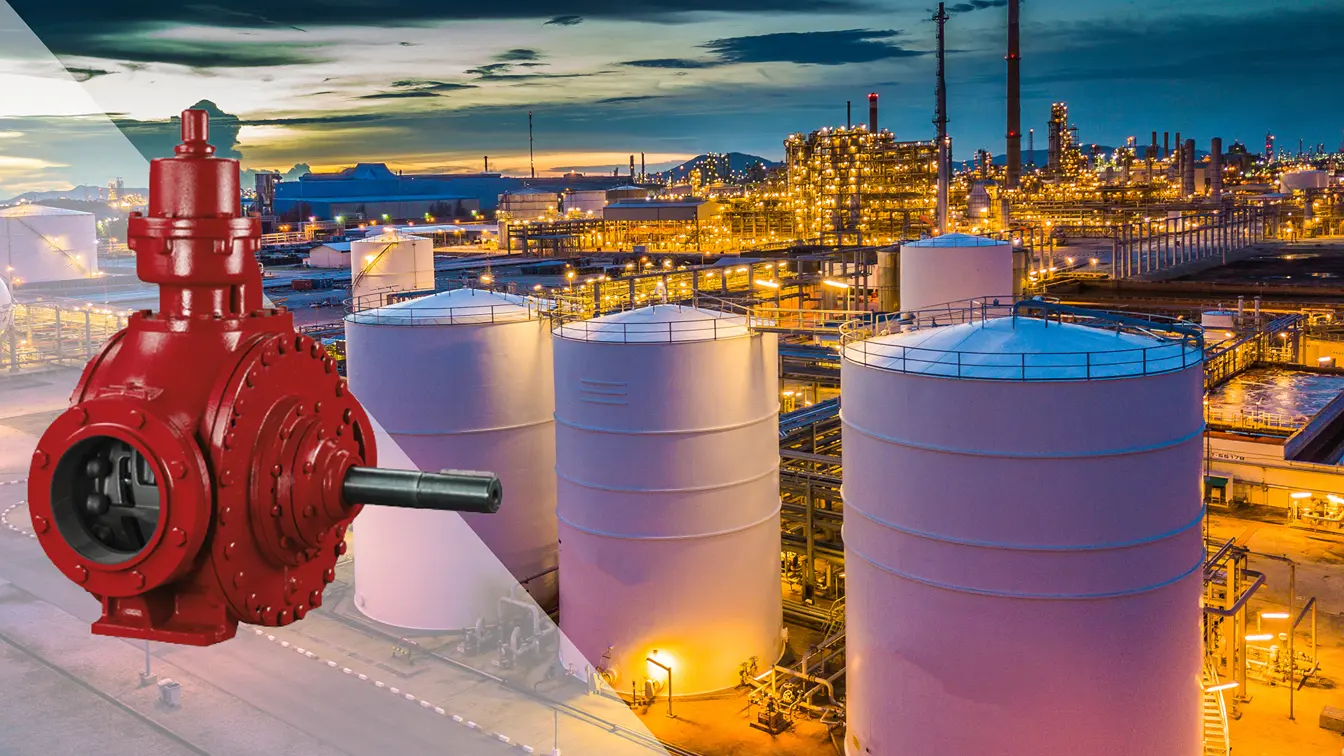
Broad Overview of Industrial Applications for Vane Pumps
Conclusion
Vane pumps, mainly rotary vane and rotary vane vacuum pumps, are integral to various industrial applications, offering unmatched reliability and efficiency in precise fluid management. Their unique design features allow for consistent flow and minimal operational pulsation, making them essential in the automotive, pharmaceutical, and environmental management industries. DAE Pumps leverages these technologies to enhance industrial productivity and minimize downtime, demonstrating the significant impact of well-engineered pump solutions in various sectors.
By providing adaptable solutions to meet diverse pressure, volume, and material requirements, DAE Pumps exemplifies innovation and customer satisfaction. Real-world applications from DAE underscore how strategic pump selection can transform production efficiencies and optimize processes, affirming the critical role of rotary vane pumps in achieving operational excellence and sustainability in challenging industrial environments.



